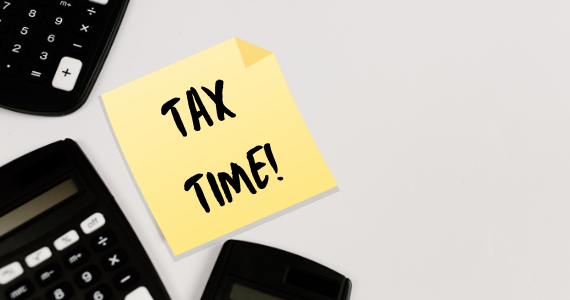By Tony Kaye, Senior Personal Finance Writer, Vanguard Australia
The Australian Tax Office has started full processing of 2020-21 income tax returns, and its objective was to start paying refunds from mid-July.
As an investor it’s important to understand what information you need to record in your next income tax return, particularly in relation to income and deductions including capital gains and losses.

Here’s a check list of what you will need to include in your 2020-21 income tax return.
Investment income
Investment income to declare in your income tax return includes any amounts you’ve received or in the case of managed funds and exchange traded funds any amounts that have also been declared. This includes money you’ve earned from:
-
Distributions from managed funds and exchange traded funds.
-
Share dividends. Interest income from bonds (fixed interest securities) and savings accounts.
-
Income received from other investment products.
-
Rental income from properties.
Your total net investment income will be taxed at your individual marginal tax rate.
Income also includes any capital gains (profits) that you’ve made during the financial year from the sale of investments or through a distribution or declaration by a managed or exchange traded fund, after the deduction of allowable expenses.
A capital gains tax (CGT) event is only triggered when an investment (including an inherited investment) is sold. A 50 per cent CGT discount applies if you are an individual or trust and you’ve held an investment for more than 12 months.
Be mindful that the ATO has advanced data analytics capabilities to track investment income paid into bank accounts, including fund distributions, share dividends and savings interest.
The regulator also recently issued a warning, advising it will be prompting around 300,000 taxpayers to explain their obligations in relation to reporting capital gains and losses made from their cryptocurrency investments.
Investment expenses
As a general comment, only expenses incurred in gaining or producing assessable/taxable income is deductible.
The ATO allows you to claim a tax deduction for any direct expenses that you incur in making your investments, unless the income from specific investments is exempt from having to pay tax.
You can claim a deduction for interest charged on money borrowed to buy managed funds, exchange traded funds, shares and other investments that you derive assessable interest or income from.
Only interest expenses incurred for an income-producing purpose are deductible.
If you sell an investment for less than you paid to buy it, you can use the value of that capital loss to only offset against any capital gains you’ve made in the current year, or carry forward the loss to offset against only future capital gains.
You can claim
According to the ATO, you can claim a deduction for costs you incur to invest, such as:
-
If you attend an investment seminar in relation to an existing investment, you may be entitled to claim a deduction for the portion of expenses that relate to investment income activities.
-
Ongoing management fees or retainers.
-
Amounts you pay for advice relating to changes in the mix of your investments.
-
A portion of other costs you incur in managing the investments, such as:
– Borrowing costs.
– Some travel expenses.
– The cost of specialist investment journals and subscriptions.
– The cost of internet access.
– The decline in value of your computer.
In addition, if you’ve made any direct personal superannuation contributions during the year using after-tax money, you’re allowed to claim a 15 per cent tax deduction in your income tax return.
Before you can claim a deduction for personal super contributions, you must give your super fund a Notice of intent to claim or vary a deduction for personal contributions form (NAT 71121) and receive an acknowledgement from your fund.
You can’t claim
-
A deduction for costs related to purchasing exchange traded funds or shares, such as brokerage fees and stamp duty. But you can include them in the cost base (cost of ownership – which you deduct from what you receive when you dispose of the shares, managed fund or exchange traded fund) to work out your capital gain or capital loss.
-
Managed fund or exchange traded fund indirect costs (the costs of managing each fund) as these are already factored into your net investment return.
-
Fees you incur for drawing up an investment plan with a financial adviser, unless you were carrying on an investment business.
-
Some interest expenses where you borrow money under a capital protected borrowing arrangement to buy shares, units in unit trusts and stapled securities. The interest is treated as the cost of the capital protection feature.
Preparing for your income tax return
Having all your investment records at hand for the financial year, including details of your transactions and investment distributions received, will ensure you accurately report your income and can claim all allowable deductions.
Your investment statements will also help you to calculate any capital gains or losses when you sell an investment.
The ATO requires you to keep records for five years that show the following:
-
How much you paid for an investment. Contracts for the purchase of an asset and receipts.
-
How much you sold an investment for. Contracts for the sale of an asset and receipts.
-
Income you receive from an investment. Keep all records of income payments such as distribution and annual tax statements, rental payment receipts and dividend statements.
-
Expenses paid while owning an investment. Receipts for payments made to manage, maintain or improve an investment.
Note – the above is general information available from the ATO. For tailored advice, you may wish to contact us on Phone 07 3340 5169 before completing your next income tax return.
Source: Vanguard June 2021
Reproduced with permission of Vanguard Investments Australia Ltd
Vanguard Investments Australia Ltd (ABN 72 072 881 086 / AFS Licence 227263) is the product issuer. We have not taken yours and your clients’ circumstances into account when preparing this material so it may not be applicable to the particular situation you are considering. You should consider your circumstances and our Product Disclosure Statement (PDS) or Prospectus before making any investment decision. You can access our PDS or Prospectus online or by calling us. This material was prepared in good faith and we accept no liability for any errors or omissions. Past performance is not an indication of future performance.
© 2021 Vanguard Investments Australia Ltd. All rights reserved.
Important:
Any information provided by the author detailed above is separate and external to our business and our Licensee. Neither our business nor our Licensee takes any responsibility for any action or any service provided by the author. Any links have been provided with permission for information purposes only and will take you to external websites, which are not connected to our company in any way. Note: Our company does not endorse and is not responsible for the accuracy of the contents/information contained within the linked site(s) accessible from this page.






